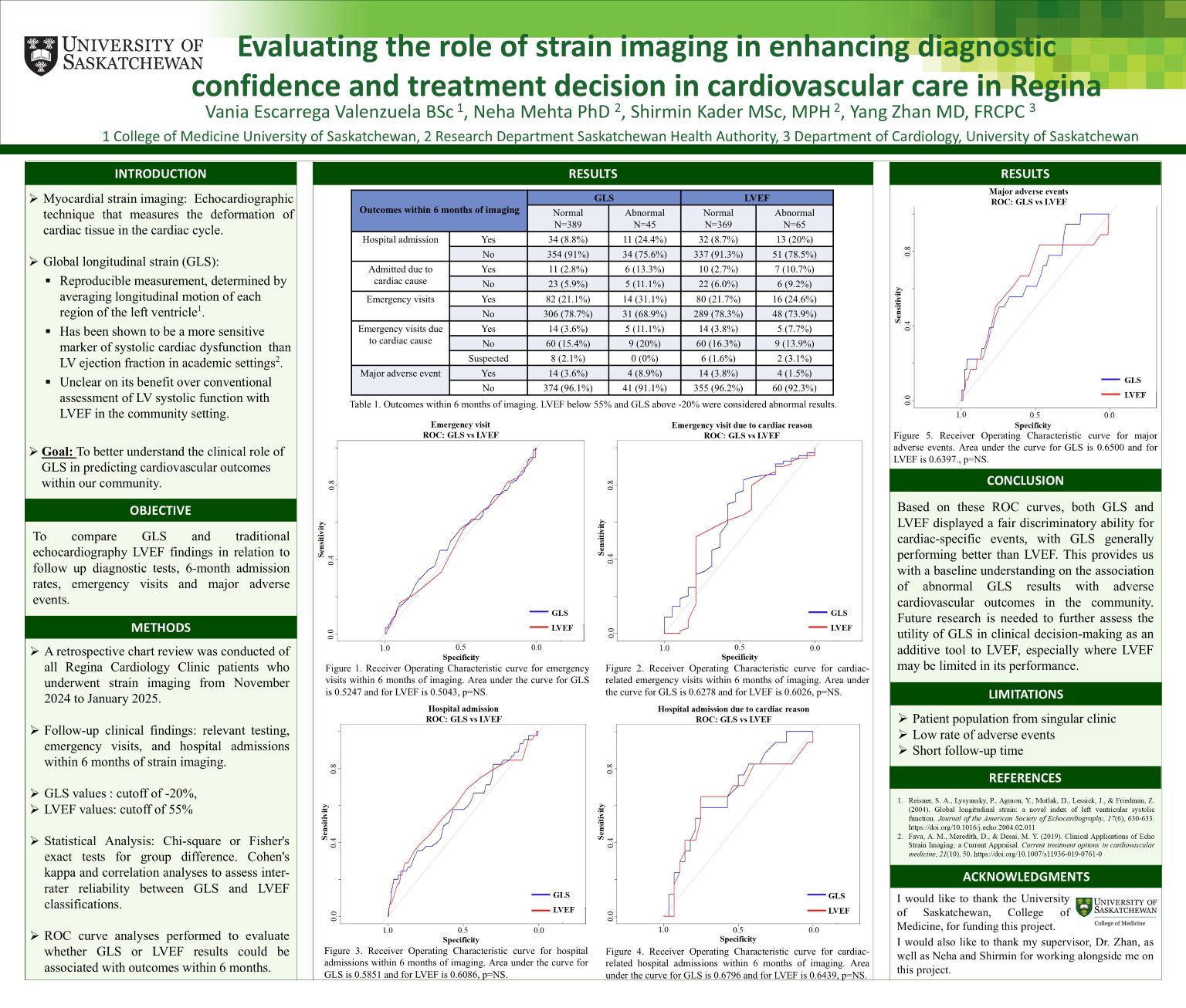
Evaluating the role of strain imaging in enhancing diagnostic confidence and treatment decision in cardiovascular care in Regina
Vania Escarrega Valenzuela
Myocardial 2D strain imaging is a new echocardiographic technique which assesses myocardial strain, a measurement of cardiac tissue deformation in the cardiac cycle. One myocardial strain component, global longitudinal strain (GLS), has shown to be more sensitive to systolic cardiac dysfunction than left ventricular ejection fraction (LVEF). It is unclear in the setting of a community clinic how much Left ventricular (LV) strain is beneficial over the conventional assessment of LV systolic function with LVEF. The current study aims to associate GLS to adverse cardiovascular events compared to LVEF. A retrospective chart review of patients who underwent strain imaging from November 2024 to January 2025 at Regina Cardiology Clinic was conducted. Follow-up clinical findings over a 6-month period were analyzed by Chi-square or Fisher’s exact tests for assessing group statistical differences, Cohen’s kappa and correlation analyses to assess inter-rater group reliability and ROC curve analyses to associate GLS and LVEF to cardiovascular
outcomes. Both GLS and LVEF showed a weak association with adverse cardiovascular outcomes, with GLS performing slightly better than LVEF. Further research with larger sample size is needed to determine the role GLS in our community setting.
outcomes. Both GLS and LVEF showed a weak association with adverse cardiovascular outcomes, with GLS performing slightly better than LVEF. Further research with larger sample size is needed to determine the role GLS in our community setting.
